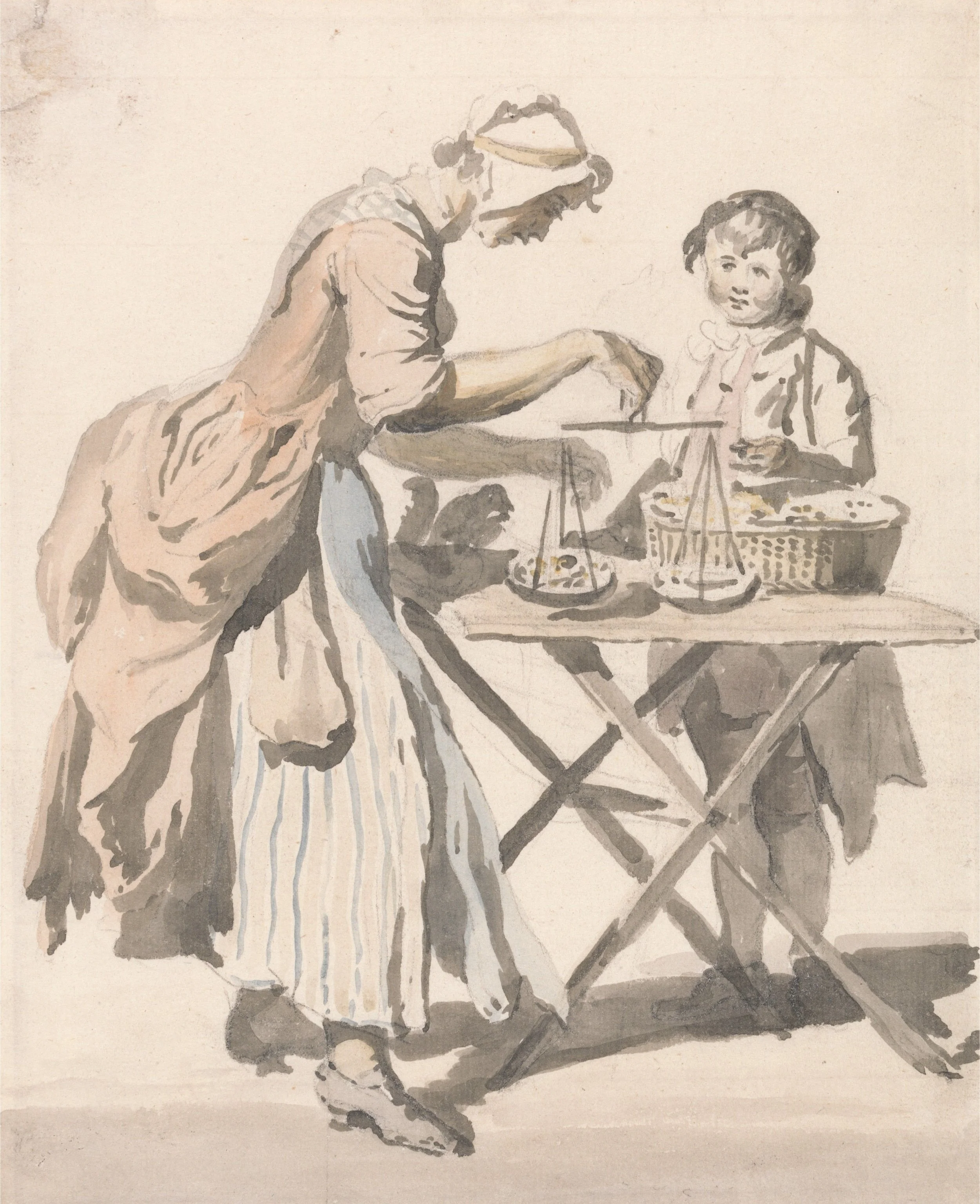Visible pockets in 18th century illustrations
Pockets are usually concealed under the gown and petticoats worn by an 18th century woman. In some artwork of the time, the pocket is visible. In some cases, it’s because she’s not quite fully dressed; in others (especially in caricatures), it seems to underscore that particular character’s money-grubbing nature.
It’s not always one or the other, though. Sometimes, a pocket is just a pocket.
Additional Resources
This site contains affiliate links for which I may be compensated
Grenadiers, 31st, 32nd and 33rd Regimants of Foot, 1751 by David Morier, c. 1751-1760
London Cries: Black Heart Cherries by Paul Sandby, c. 1759
Rare Mackarel Three a Groat Or Four for Sixpence by Paul Sandby, 1760
Children playing with a ball by Paul Sandby
The Recruiting Sergeant by John Collet, 1767
La Belle fileuse by Johann Jakob Haid, c. 1770s
The Shower, 1772
The lovely Sacarissa dressing for the Pantheon, 1772
Cobler’s Hall, 1775
Tight Lacing, or Fashion before Ease, 1777
Spring, 1779
The Asylum for the Deaf, late 18th century
Melpomene, 1784
A woman carrying a child in Camp in Hyde Park, London by James Malton, 1784
An angel, gliding on a sun-beam into paradice, 1791
Frying Sprats, Vide. Royal Supper, 1791
Cobler’s Hall (H/T Rowenna Miller Hamper)
Tricoteuse 1793 by Camus (19th century)
The Cries of London: Fresh Gathered Peas, Young Hastings, 1795
Young woman buying a love song by Pehr Hilleström, c. 1796
The Absent Father or the Sorrows of War, 1797
The Man of Feeling, in search of Indespensibles; a Scene at the little French Milleners by James Gillray, 1800
The Grandfather, 1811
Haymakers at dinner by Thomas Uwins, c. 1812
The Refusal by Sir David Wilkie, 1814
The Hop Garland by William Frederick Witherington, 1834
The drover’s departure: A scene in the Grampians by Sir Edwin Henry Landseer, 1835
